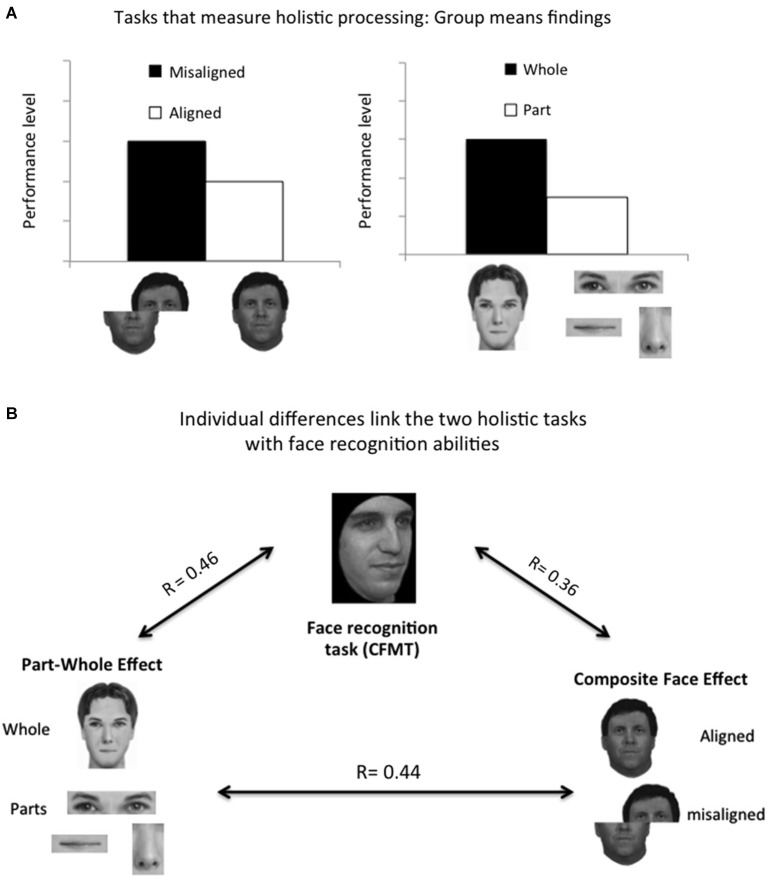Figure 1.
(A) Group mean findings of the classical holistic processing measures. The part-whole task shows better recognition of face parts when presented within the whole face (i.e., whole condition) than when presented in isolation (i.e., part condition). The composite face task shows better recognition of upper or lower part of the face when it is misaligned than when it is aligned with an another face of a different identity, indicating interactions (which leads to interference) between the two face halves in the aligned condition (see also footnote 1). (B) Correlational analyses between the two measures of holistic processing and their relationship with face recognition abilities reveal moderate correlations (Degutis et al., 2013; see also footnote 2).

